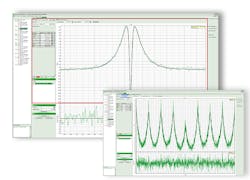Using coincidence correlation for studying quantum optic systems
Detecting coincidence correlations with picosecond timing is relevant to many quantum research areas including studying single photon sources in Hanbury-Brown-Twiss setups, quantum key distribution (QKD), general quantum optics or the study of entanglement using Hong-Ou Mandel setups (HOM). For example, coincidence correlation can be used to determine if one is actually observing a single quantum system in the form of a single photon emitter. The method is based on the fact that such a system can only emit one photon at a time. A typical quantum system such as a single molecule or a defect center in diamond features a characteristic average lifetime for its excited state. The system can be excited again only after a specific time frame has passed. If one finds that two detectors observing the same source trigger at the same time (within statistically significant time), then the source is obviously not a single photon emitter.
When dealing with photon entanglement, one effectively tries to prove or disprove correlations between measurement outcomes using a correlator. In the case of experiments with photons one may, for instance, employ polarizers to filter out quantum states of interest and then use photon detectors to determine whether or not they occurred correspondingly at both parts of the entangled pair. Now, given that photon detectors are not 100% efficient (and actually neither is the creation of entangled pairs and their transmission), one typically must repeat the experiment many times in order to arrive at a statistically reliable answer. Since there can also be unwanted photons from background radiation or detector artifacts, it is common practice to perform coincidence correlation with picosecond timing. The correlations can then be evaluated for narrow time windows where knowledge of photon travel times can be used to eliminate background noise.
PicoQuant’s QuCoa software package provides an integrated solution for data acquisition and analysis using the unique T2 time-tagging mode of their TCSPC electronics. The software offers special analysis routines for coincidence correlations as well as for coincidence counting applications. It features one of the fastest software correlators on the market for coincidence correlation, which permits to correlate the absolute arrival times of photons in real time. This allows, for example, assessing the quality of an antibunching curve already during the measurement. The g(2)(0) value and count rates on all detectors are continuously calculated and displayed. Several established models such as single emitter with or without shelved state or pulsed excitation based on exponential decays, including the influence of the limited detector resolution as well as correlated and uncorrelated background can be fitted to the measured data. The fitting models support both pulsed and cw excitation.
The QuCoa software also provides a unique, easy to use event filter feature for coincidence counting applications. Filters can be constructed via a simple and intuitive graphical user interface which permits combining detection channels and marker signals in a user-defined time window using logical operations (AND, OR, NOT). The filters can be applied both during data acquisition and offline analysis mode. By defining time gates, the user can also restrict coincidence detection to specific time ranges. Learn More.


